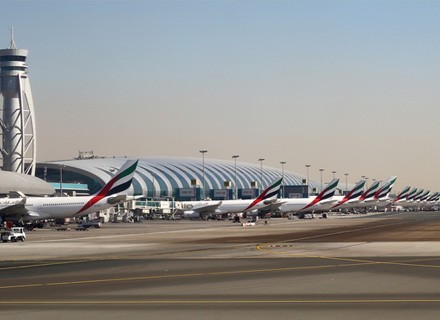Dubai International Airport, despite registering a slight capacity decline, continues to be the busiest airport in the world for international travel in 2023.
According to aviation consultancy OAG, the hub, which has consistently outperformed its international competitors, including London Heathrow, logged 4.2 million seats in February 2023.
Although Dubai International Airport has the highest monthly capacity in the world, the latest figures are down by 9% from the previous month.
With 3.3 million seats and a 7% drop from the prior month, London Heathrow, a solid rival to Dubai International Airport, placed second overall. The third-place went to Istanbul Airport, Paris Charles de Gaulle and Singapore’s Changi.
The most recent monthly rankings from OAG are based on February’s scheduled airline capacity.
The consulting company also compared the most recent data to the same month in 2019, before the global pandemic COVID-19 began.
Dubai International Airport recently reported carrying over 66 million passengers overall in 2022, an increase of 127% from 2021. The airport anticipates a rise in traffic, with 78 million passengers passing through in total by 2023.
According to the International Air Transport Association (IATA), relaxing COVID-19 regulations helped the aviation sector grow in 2017. Compared to 2021, international traffic increased by 152.7% in 2022, surpassing pre-COVID levels by 62.2%.
The average waiting time at Dubai International Airport departure passport control was less than five minutes for over 96% of passengers in 2022, the airport’s operator announced recently.
For arrivals, the average waiting time at passport control queues was less than 13 minutes for over 95% of flyers.
These figures are usually based on average queuing times (weighted by the total number of passengers processed) captured by Dubai Airports’ real-time monitoring system.
Dubai International Airport also mentioned how its ‘Smart Gates’ were speeding customers through the immigration process.
The airport rolled out the feature in 2021, thus enabling flyers to travel without using their identification papers.
Utilising a mix of facial and iris recognition, passengers can check in for their flights and complete immigration formalities sans identification documents. Their faces serve as ‘passports.’
The aviation hub’s baggage handling system processed a total of 62.2 million bags in 2022.
“With a success rate of 99.8%, this translates into 2.2 mishandled bags per 1,000 passengers, an impressive performance for the world’s busiest international hub. In terms of baggage delivery on arrival, 92% of all baggage was delivered within 45 minutes to our customers. The baggage volume in 2022 represents 86.2% of the 2019 baggage volume at DXB,” Dubai International Airport stated.
The baggage delivery performance measures the time from the moment the aircraft comes to a halt on the bay to the time the bags are delivered to the reclaim carousel.
According to OAG, capacity decreased in February 2023 compared to January at every significant airport that made it into its top 10 rankings.
The three aviation hubs that have seen the most significant drops in traffic are Istanbul, Doha, and Bangkok, each of which saw a 10% drop in passengers.
However, some Asian airports have experienced increased passenger volume, with Changi in Singapore, Incheon in Korea, and Suvarnabhumi in Bangkok making OAG’s top 10.
Changi advanced from position 11 to position 4, Incheon advanced from position 45 to position 7, and Suvarnabhumi advanced from position 46 to place 10.
London Heathrow remains the top hub in the European market, followed by Istanbul with 3.2 million seats.

